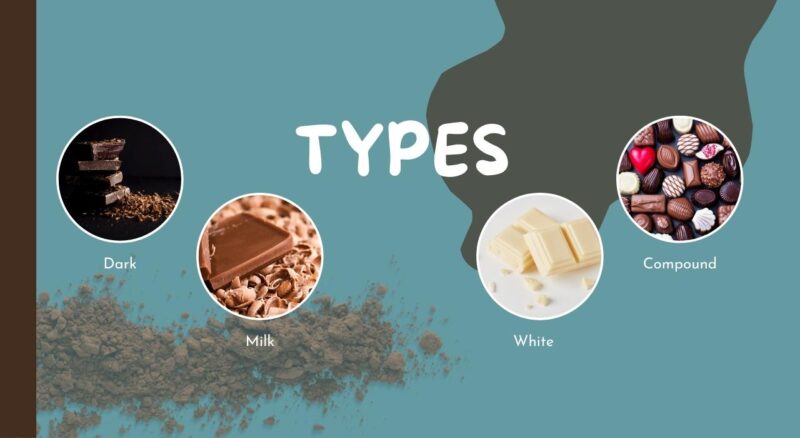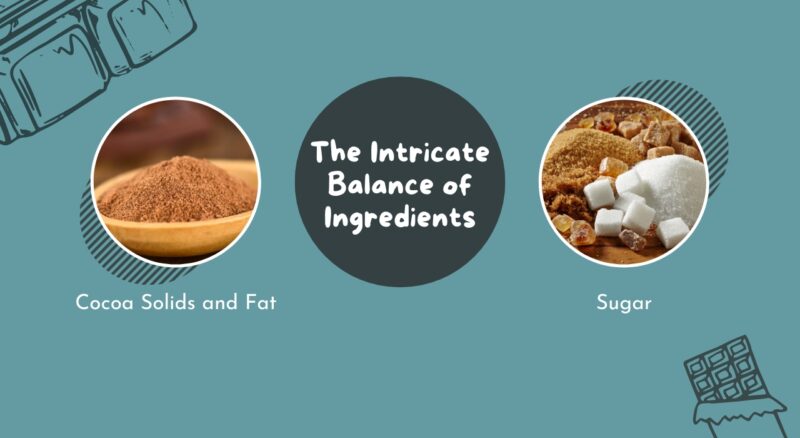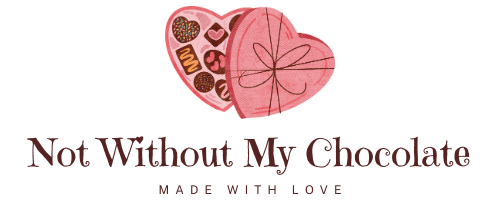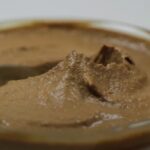When you hear the word ‘chocolate,’ what springs to mind? The rich, creamy sensation of a well-made truffle? The deep, earthy tones of premium dark chocolate? Regardless of your personal preferences, one thing’s for sure: this is a beloved treat across the globe.
But there’s more to this sweet delicacy than just satisfying your sweet tooth. Understanding the melting points of different types of chocolate can greatly enhance your culinary endeavors, especially when it comes to baking, tempering, and even sculpting. So, let’s delve into the delicious world of chocolate and discover why some melt in your mouth while others require a little more heat.
An Overview: The Main Types

Before we dive into melting points, it’s essential to know the main types of chocolate out there.
- Dark: This type, also known as ‘plain,’ contains cocoa solids, sugar, and cocoa butter with minimal or no dairy. The percentage of cocoa varies, ranging from 70% to 99%.
- Milk: Here, milk or milk powder is added to the mix of cocoa solids, sugar, and cocoa butter. This type is sweeter and creamier than dark one, and its cocoa content usually ranges between 10% to 50%.
- White: A unique member of the chocolate family, the white type contains no cocoa solids at all. It is made up of cocoa butter, sugar, and milk solids, which give it a creamy, sweet flavor.
- Compound: Also known as ‘baking,’ ‘coating,’ or ‘dipping’ chocolate, this type substitutes cocoa butter with vegetable fats. It’s cheaper and easier to work with than other types but lacks the nuanced flavor of cocoa butter-based types.
Melting Points and What Influences Them
The melting point of chocolate, or the temperature at which it transitions from a solid to a liquid state, depends on several factors:
- Cocoa Content: The higher the cocoa content, the higher the melting point. This is due to the cocoa solids (the non-fat part of cocoa) in the chocolate, which have a higher melting point than cocoa butter or other fats.
- Fat Content: Fats have lower melting points than cocoa solids. So, chocolate with a higher fat content, such as white, will have a lower melting point than the one with a lower fat content, like high-percentage dark chocolate.
- Sugar Content: Sugar molecules interfere with the crystalline structure of cocoa and fat, effectively lowering the melting point. Hence, sweeter chocolates tend to have lower melting points.
Let’s look at a table that summarises the melting points of the different types of chocolate:
|
Type of Chocolate |
Average Melting Point (Fahrenheit) |
|
Dark |
115 – 120 |
|
Milk |
105 – 115 |
|
White |
100 – 110 |
|
Compound |
95 – 105 |
Practical Applications in Baking and Beyond

Understanding the melting points of chocolate can truly elevate your baking skills. For example, using dark type for baking a cake can give it a rich, intense flavor, while adding a white chocolate ganache – with its lower melting point – can provide a creamy, melt-in-your-mouth icing that is easily spreadable.
Moreover, if you’re a budding chocolatier aiming to craft intricate chocolate sculptures or glossy bonbons, understanding the art of tempering – the process of heating and cooling chocolate to achieve a glossy finish and smooth texture – is critical. Different types need to be tempered at different temperatures, which again relates back to their melting points.
The Intricate Balance of Ingredients

Understanding the delicate balance of ingredients in each type of chocolate is the first step in learning why they behave differently when exposed to heat. As we’ve mentioned, the percentage of cocoa solids, fat, and sugar in each type of chocolate influences its melting point.
Cocoa Solids and Fat
Let’s delve deeper into the role of cocoa solids. They are the residue left after cocoa butter is extracted from cacao beans and contain proteins, carbohydrates, and antioxidants. The percentage of cocoa solids in chocolate significantly influences its texture and melting point.
On the other hand, the fat in chocolate primarily comes from cocoa butter, which is a mixture of different fatty acids. Fatty acids have different melting points, and this mixture determines how the chocolate behaves when heated. The principal fatty acids in cocoa butter are oleic acid, stearic acid, and palmitic acid, with stearic acid having the highest melting point. This intricate blend of fatty acids contributes to the unique melting characteristics of chocolate – solid at room temperature but melts at body temperature.
Sugar
Sugar serves multiple purposes. It provides sweetness, contributes to the body of the chocolate, and even helps temper the bitterness of cocoa. More importantly, the size of sugar crystals influences the texture and melting behavior. The smaller the crystals, the smoother the chocolate will feel in your mouth.
The Crystal Structure
A significant concept in the world of chocolate is the polymorphic nature of cocoa butter, which refers to its ability to form multiple types of crystal structures (six in total, labeled I-VI), each with a different melting point. The form V, also known as the beta crystal, is the most desired by chocolatiers due to its glossy appearance, pleasant mouthfeel, and higher melting point (around 94°F), making the chocolate more stable at room temperature.
Achieving this ideal crystalline structure requires skillful tempering, which is a heating, cooling, and reheating process that controls the formation of cocoa butter crystals. Different chocolates require different tempering temperatures, reflecting their unique compositions and melting points.
Health Factors and Melting Points
There’s a hidden health angle to the melting points of chocolate too. The dark type, with its higher melting point, tends to have a higher percentage of cocoa, which in turn translates to more flavonoids. These compounds have been linked to several health benefits, including improved heart health and reduced inflammation.
White chocolate, with its lower melting point, contains no cocoa solids at all and thus fewer of these beneficial compounds. However, it is rich in cocoa butter, providing a creamy texture and unique flavor profile that appeals to many palates.
The Art and Science Behind This Delicious Treat

All these intricacies we’ve discussed – from the balance of ingredients to the crystal structure – are why making chocolate is often considered both an art and a science. Skilled chocolatiers understand the intricacies behind different types of chocolate, using this knowledge to create a wide variety of tempting treats.
Mastering these elements and the melting points of different chocolates allows us to tailor our creations to a specific purpose, whether that’s a beautifully crafted sculpture, a shiny tempered shell for truffles, or a perfectly smooth sauce.
Final Words
As with many culinary wonders, understanding the science behind chocolate can greatly enhance your experience, be it in baking, cooking, or even just enjoying a square (or three) after dinner. While we’ve mainly focused on melting points, remember that chocolate is a complex delight, with factors such as origin, processing, and additional flavors also influencing the final result.
Next time you enjoy your favorite treat, take a moment to appreciate the journey that it’s been on. From cocoa bean to melting point, it’s a delicious testament to the magic of food science.
Hi, I’m Dean Terry, and cakes are my life! I’ve spent over a decade perfecting the art of creating cakes that not only look incredible but taste unforgettable. What started as a hobby in my own kitchen quickly turned into a full-on passion, and now I get to craft one-of-a-kind cakes for weddings, birthdays, and big celebrations.
For me, it’s all about the details—whether I’m designing an elegant buttercream finish or a crazy multi-tiered cake with wild designs, I make sure each cake tells a story. I’m always experimenting with flavors and techniques, because why settle for the ordinary when you can create something extraordinary?
When I’m not up to my elbows in frosting, you’ll probably find me teaching others how to bake or dreaming up my next big cake challenge. If there’s one thing I believe, it’s that every great celebration deserves a cake that’s as special as the moment itself!







